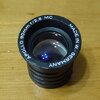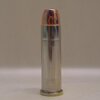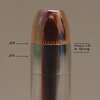I too, crimp "by eye" meaning I look at the crimp and determine if it's the correct crimp for the load, the bullet, and the use. In '69 I was reloading 38 Special with a Lee Loader and copied the amount of crimp that was on some factory ammo I had. I graduated to a bench press using Lee dies and followed the "add 1/2, 3/4 turn" guideline but in some instances, it was too heavy and for some loads too light. I started reloading 357 Magnum and found I needed a heavier crimp so I added crimp until all bullets stayed in place. All the crimps I use today are from my experience/experimenting from that first "copy the factory" crimp. Basically I like to see the case mouth rolled into the crimp groove a few thousandths. If my bullets "walk" I'll add a bit more.
I have been reloading for quite a while and I still separate the seating and crimping steps. Very early on I tried to combine the process, but getting the adjustments "just right" was a pain and I felt I had more control on both steps when done separately. But many combine the steps successfully. For ease of seating/crimping separately, I just got a second seating/crimping die and instead of adjusting form seat to crimp, I just swapped dies...









